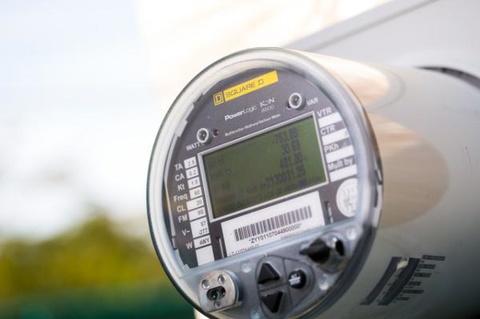Researchers Receive $1 Million Grant to Improve Utility Smart Metering, Energy Services and Conservation

The National Science Foundation's Partnerships for Innovation: Building Innovation Capacity program today announced a three-year, $1 million grant to three University of Massachusetts Amherst researchers and others to work with Holyoke Gas & Electric Co. (HG&E) to develop smart energy services that will improve grid efficiency, encourage energy conservation and promote local renewable energy sources such as rooftop solar.
Smart grid experts Prashant Shenoy, a computer science professor, and David Irwin, professor of electrical and computer engineering, with green building expert and professor in the environmental conservation department Simi Hoque, are co-principal investigators on the project. The new grant follows a pilot project funded last year by the Massachusetts Department of Energy Resources and carried out by Shenoy and a UMass Amherst team at HG&E that demonstrated how smart electric meters save money and power.
Shenoy, Hoque and Irwin, with others at the University of Maryland-Baltimore County and Williams College in Williamstown, Mass., will use anonymous data collected from several dozen volunteer HG&E customer homes to expand last year's project to improve electricity use based on meter data. Data management will be on high-speed processors at the Massachusetts Green High Performance Computing Center in Holyoke.
Mike Malone, UMass Amherst's vice chancellor for research and engagement, says, "UMass Amherst could not be more pleased to see this very competitive NSF Partnerships for Innovation award to support our engagement in Holyoke. The project focus connects terrific campus research strengths with HGE and the MGHPCC, at the heart of the Holyoke Innovation District."
This project is utility-driven, the researchers point out, because utilities have access to massive amounts of customer energy data, a way to deliver analytic results to customers and strong incentives to improve customer energy efficiency, for example by reducing peak demand to reduce their own operational costs.
Smart meters provide a detailed record of electricity use in a home and allow the utility and researchers to see what appliances, lights and heating and cooling equipment are being used during the day. The meters report electronically every five minutes, giving a detailed record from each house.
HG&E installed 18,000 such meters to improve the accuracy and efficiency of its billing system, increase meter reader safety, protect system revenues, and enable automatic detection of power outages. Enhanced data collection from the system will allow HG&E to conduct analyses and develop strategies related to load management, network planning, outage prevention and ratepayer incentives.
James Lavelle, the utility's manager, says, "HG&E is excited at the opportunity to continue to work with professors Shenoy and Irwin and their academic partners, as we continue to learn how to better serve our customers through their smart meter data analysis."
Shenoy says the team will focus on a few key energy consumers in the home, especially heating. They will develop three smart energy services: iProgram, Green Demand Response and PowerTrip to improve performance and save energy.
iProgram will use smart meter data to calculate the most cost-effective thermostat up-down schedule for a given home. As Shenoy explains, says many people have programmable thermostats, but may not use them well or even at all. By programming heat to come on just before people wake up in the morning, turning it down when they leave and back on in the evening can save 5 percent to 10 percent of energy costs in many cases, he notes. Future iProgram data might be offered to consumers online or as part of the utility bill, for example.
On the utility side, applying this information to the grid's function can improve energy efficiency by reducing capacity, transmission and energy charges and extending equipment lifespan.
The Green Demand Response service is designed to address a problem that comes with using renewable power, Irwin explains. Electric power from sources like solar and wind must be used immediately, which introduces some inflexibility to the grid. By regulating so-called elastic loads that can be flexible in when power is needed, the grid can accommodate more renewables.
The PowerTrip service is expected to provide real-time unusual energy event notifications and suggested conservation tips to users, Irwin says. For example, if a water heater or other appliance is malfunctioning and drawing more power than usual, the utility might send a text message or other notice to alert the homeowner to the problem.
NSF funded 10 Partnerships for Innovation: Building Innovation Capacity projects this year for smart, human-centered service systems. Program organizers point out that "by definition, "a human-centered service system interacts with people; end users, recipients, beneficiaries, providers and/or decision makers, as it operates. These interactions must add value to people to be considered a service.
More: http://www.nsf.gov/news/news_summ.jsp?cntn_id=136268&org=NSF&from=news
Contact: Janet Lathrop, 413/545-0444; jlathrop@admin.umass.edu<mailto:jlathrop@admin.umass.edu>
Prashant Shenoy, 413/577-0056, shenoy@cs.umass.edu<mailto:shenoy@cs.umass.edu>
David Irwin, 413/545-5822; Irwin@ecs.umass.edu<mailto:Irwin@ecs.umass.edu>
Sarah Bates, NSF, 703/292-7738, sabates@nsf.gov<mailto:sabates@nsf.gov>
(Source: UMass Office of News & Media Relations)